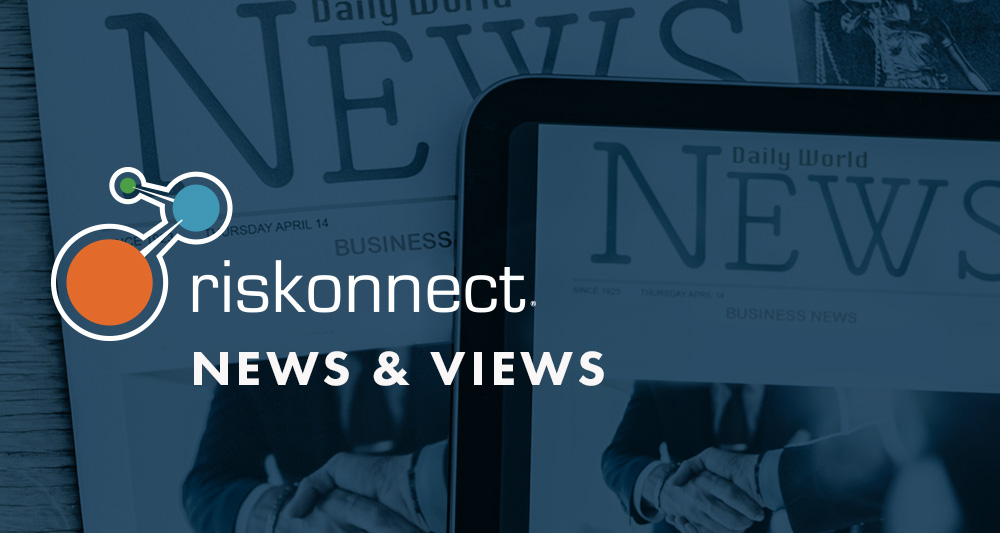The SEC’s new proposal for climate disclosures includes reporting on Scope 3 emissions for large U.S. public companies. While the proposals have been expected for some time, reporting on Scope 3 emissions is particularly challenging.
What Are Scope 3 Emissions?
The U.S. Environmental Protection Agency categorizes greenhouse gas (GHG) emissions as:
- Scope 1: Indirect GHG emissions from electricity, steam, heat, or cooling that is purchased by the reporting organization
- Scope 2: Direct emissions from sources that are owned or controlled by the reporting organization, including on-site fossil fuel combustion – like for boilers or furnaces – and fuel used in vehicles
- Scope 3: Emissions resulting from activities and/or assets not owned or controlled by the reporting organization, such as those of its suppliers and vendors throughout its value chain
Why Scope 3 Emissions Are Important
For many companies and industries, Scope 3 is by far the greatest percentage of total emissions.
In consumer-goods manufacturing or financial services, combined Scope 1 and 2 emissions represent less than 10% of total emissions. In other sectors – including the integrated oil and gas industry – Scope 3 emissions are more than six times the level of Scope 1 and 2 emissions, according to our own analysis of sustainability reports.
Because of its size, Scope 3 also represents the largest opportunity for a reporting organization to reduce its overall emissions. Investors, regulators, corporate leadership, and other stakeholders are increasingly looking to identify opportunities to reduce emissions, identify and manage climate risks, and support the transition to a low-carbon economy. But a major blind spot has been getting information about the emissions from the upstream and downstream value chain.
Why Reporting on Scope 3 is Difficult
Despite its importance, reporting on Scope 3 is often poor or nonexistent.
A recent report of business leaders from the US and UK found that more than 90% see ESG issues as a financial imperative but are unprepared to meet the proposed reporting requirements.
One reason reporting on Scope 3 emissions is so difficult is the sheer number of partners in the value chain. For large businesses upstream supply-chain partners that contribute to Scope 3 emissions can span the globe – and number in the thousands or tens of thousands. Complicating matters is the fact that almost all of the data that’s needed for calculating emissions is found outside the reporting organization with trading partners, such as suppliers, vendors, and distributors.
Coordinating the collection of your value-chain partners’ energy-use data and analyzing it using the relevant energy grid is a big job. This work, which is manual and repetitive, is often done by sustainability specialists and is a low-value use of their unique skills.
Calculating Scope 3 emissions and impacts is also extremely complex. Reporting organizations have basically three options from which to choose. The most accurate – but most complex – is the supplier-specific method, which requires the most collaboration and data sharing. Another choice is the less complex spend-based method, which estimates emissions and impacts using lifecycle analysis and the business’ purchasing data. The third choice is a hybrid of the two that uses the supplier-specific option for high-impact spend categories and the supplier-spend option for everything else. Leading organizations are increasingly moving toward supplier-specific assessments to gain more actionable insights.
One thing to keep in mind is that every approach requires input and coordination with multiple departments within your organization, including finance, purchasing, IT, legal, communications, and investor relations.
4 Tips for Meeting the Proposed SEC Reporting Requirements
- Start now. The SEC’s proposals recently completed the commenting period and may take on modifications before enactment. Any changes, however, won’t alter the intent – which is to satisfy investors’ needs for consistent, material information value-chain emissions. Business leaders should begin preparing now to meet the timeline:
- March 21, 2022 – SEC released new proposals for climate-related risk disclosures
- June 17, 2022 – End of comment period for the new proposals
- February 2024 – First disclosures on Scope 1 and 2 for large organizations
- February 2025 – Disclosures on Scope 3 emissions and emissions intensity required for large organizations
- Get some help. Many companies don’t have the expertise or capacity to take on an initiative of this scale and turn to outside help from ESG risk specialists.
Look for a partner with a demonstrated track record in carbon accounting, financial reporting, and supply-chain management. Consider the partner’s ability to provide assurance around Scope 3 accounting process and disclosures. The right partner – or partners – can save time and money in the long run. - Use technology. The amount of data needed to meet the proposed disclosures is well beyond what can reasonably be managed by even a team of people without the aid of software technology. The right technology can be a strategic capability that will enable your organization to gain the largest return on your ESG investments. Consider:
- Can the software efficiently manage the flow of data? Look for a platform that can “borrow” data from your existing internal systems, collect data from supply-chain and other third-party partners, and bring it all together to into a cohesive story.
- What is the ROI? Look for technology that adds business value through process automation, embedded intelligence, and continuous monitoring of risks and performance.
- How agile is the platform? Look for out-of-the-box configuration capabilities for data management, analytics, user management, and localization to future-proof your investment.
- Don’t stop at reporting. A recent study found that 75% of institutional investors would divest from companies based on poor ESG ratings. Most ESG ratings are published on an annual basis. While useful, annual ratings don’t always tell the full story. Any current progress won’t be reflected until the next cycle.
To get the highest return on your ESG investments, it’s important to find ways to engage with stakeholders through forums for collaboration and up-to-the-moment data sharing.
Reporting on Scope 3 emissions is a challenging undertaking to be sure – but for many it will no longer be an option. The time to prepare is now. And the clock is ticking.
For more information on ESG, download our e-book, Taking a Stand on ESG, and check out Riskonnect’s ESG software solution.




